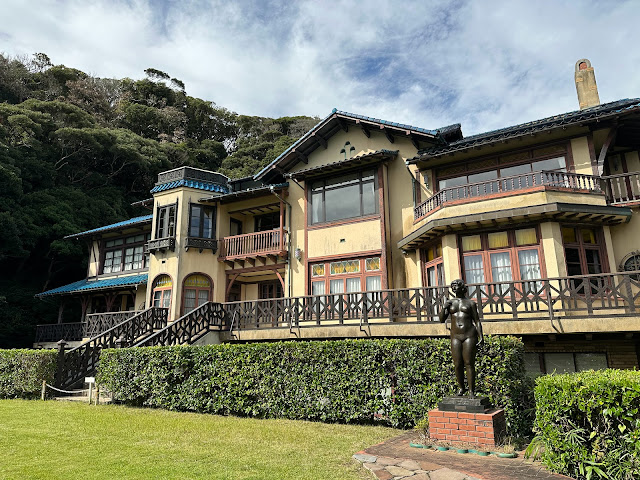澁澤龍彦 高丘親王航海記(鎌倉文学館) Tatsuhikio Shibusawa : Voyage of Takaoka Imperial Prince (Kamakura Museum of Literature)
澁澤龍彦が書いた唯一の長編小説、高丘親王航海記をテーマにした展覧会。
澁澤は鎌倉で暮らしていたが、その所縁の鎌倉文学館で、没後35年を記念して開催された。
高丘親王は実在の人物。嵯峨天皇の第3皇子で、空海の十大弟子の一人にも数えられたが、老年になってから天竺行きを志して渡海。その志を遂げることなく、旅の途中で亡くなったと言われている。
澁澤といえば、ダークで幻想的な、あるいはエロティックなテーマのエッセイや短編小説でよく知られている。
その総決算とも言えるこの長編小説は、昭和60年から連載が開始されて、昭和62年に完結した。
しかし執筆中の澁澤は癌に犯されていて、脱稿も入院中に迎え、その同じ年に亡くなった。
鎌倉文学館の展示会場には、高丘親王航海記の直筆の原稿や、澁澤が参考にした書籍や資料などが展示されていた。
これまでに澁澤の本はエッセイについては何冊か読んだことがあったが、その小説は読んだことがなかった。
この展覧会に合わせて、この本を初めて読んでみたが、それまでに読んだことのないような、不思議な雰囲気に満ちた小説で、展示されていた原稿や資料を見ることでよりその内容に深く入り込んでしまい、この先も忘れることのできそうにない小説となった。
An exhibition on the theme of Tatsuhiko Shibusawa's only full-length novel, The Voyage of Imperial Prince Takaoka.
Shibusawa lived in Kamakura, and the event was held at the Kamakura Museum of Literature, which was associated with him, to commemorate the 35th anniversary of his death.
Prince Takaoka is a real person. He was the third son of Emperor Saga and was counted as one of Kukai's ten greatest disciples. He is said to have died on his journey without fulfilling his wishes.
Shibusawa is best known for his essays and short stories on dark, fantastical and erotic themes.
This full-length novel, which can be said to be the total settlement, began serialization in 1985 and was completed in 1987.
However, while he was writing, Shibusawa was stricken with cancer, and he died in the same year when the novel was completed.
At the Kamakura Literature Museum exhibition hall, there were exhibits such as the handwritten manuscript of Imperial Prince Takaoka's Voyage, and the books and materials that Shibusawa referred to.
I had read several books about Shibusawa's essays, but had never read the novel.
I read this book for the first time in conjunction with this exhibition, but it was a novel filled with a mysterious atmosphere that I had never read before. I got deeply into it, and it became a novel that I will never be able to forget.



コメント
コメントを投稿